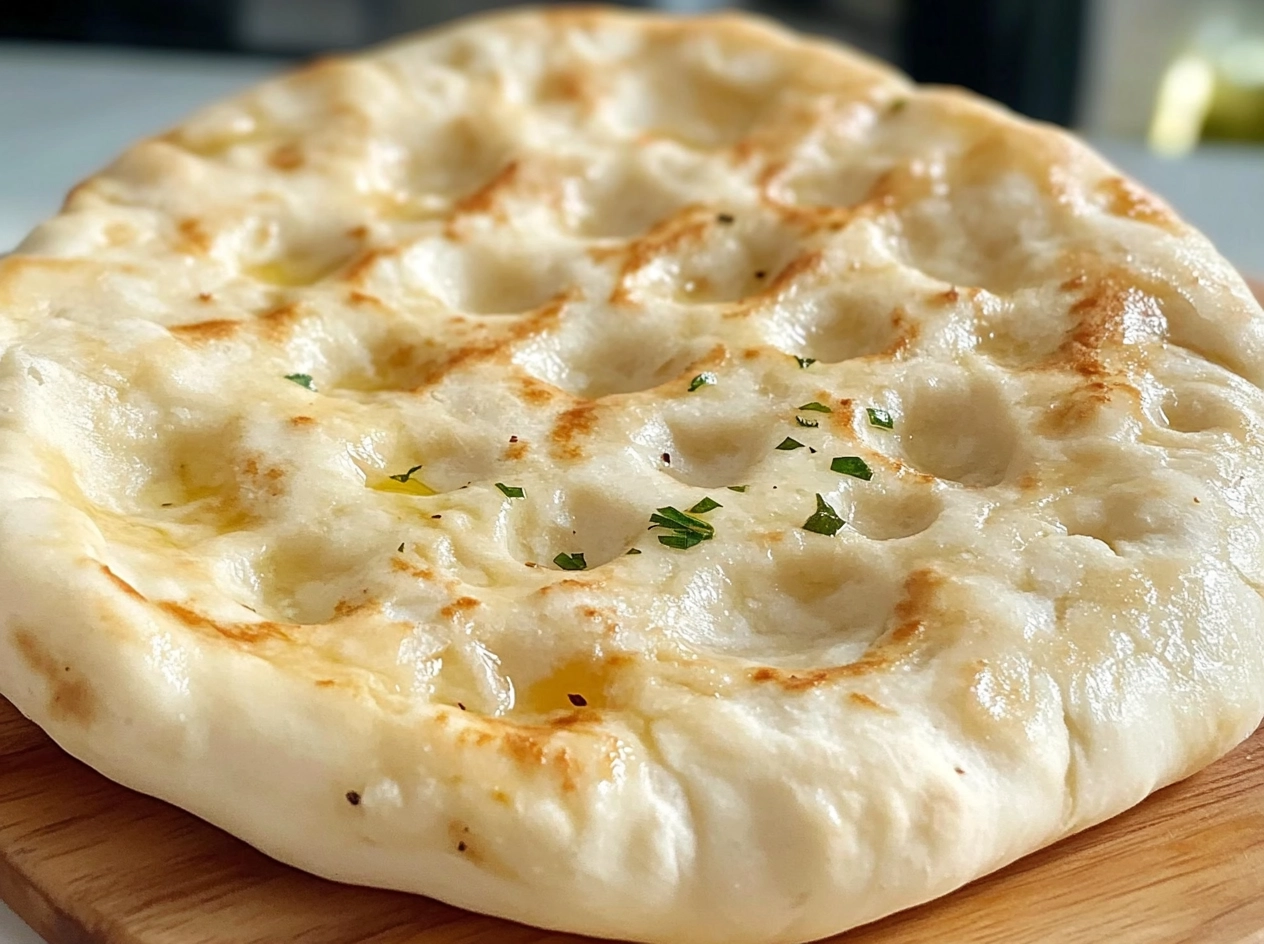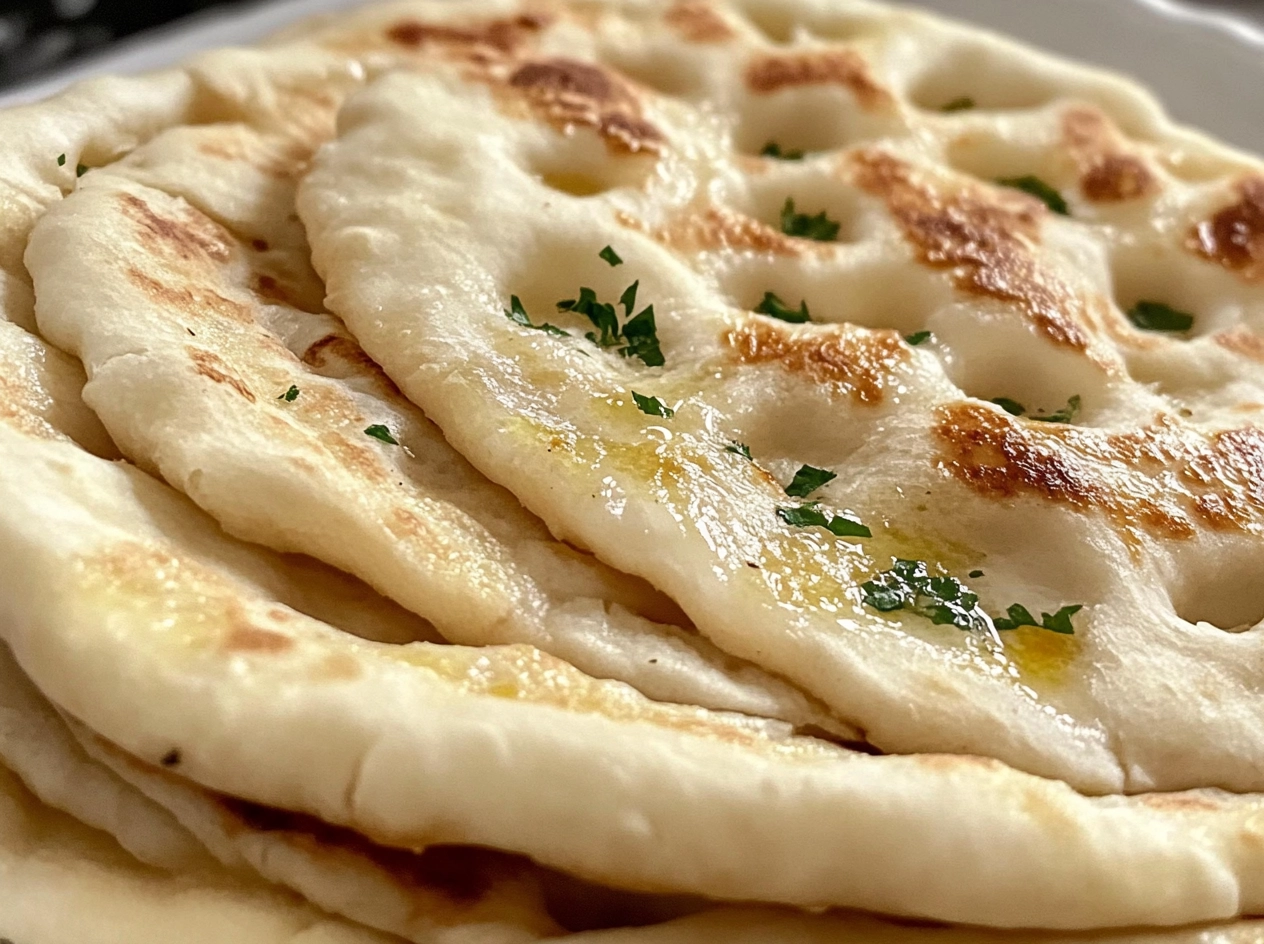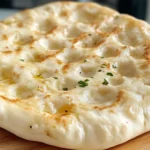NO-OVEN TURKISH BREAD

Turkish bread, known as “Ekmek,” is a staple in Turkish cuisine, embodying the richness of its culture. Bread holds a significant place in the hearts and homes of Turkish people, often gracing tables at every meal. This recipe introduces a no-oven method for creating this delightful bread, making it accessible even in the smallest of kitchens. It’s perfect for those who want to enjoy homemade bread without the necessity of an oven, offering an easy, rewarding experience. The fragrant aroma and satisfying texture will inspire you to bake again and again, bringing the heart of Turkey right into your kitchen.
Historical Background and Significance of Turkish Bread
The importance of bread in Turkish cuisine cannot be overstated. It forms the foundation of nearly every meal, offering not just sustenance but also a sense of community and tradition. Each day, households greet the morning with fresh bread, reflecting its integral role in daily life.
Role of Bread in Turkish Daily Diet
In Turkey, bread is more than just a side; it is an essential part of breakfast, lunch, and dinner. It can be found gracing the table alongside delectable dishes such as kebabs, mezes, and hearty soups. Families often gather around shared loaves, breaking bread together and fostering a sense of togetherness.
Traditional Turkish Bread Varieties
Turkey boasts an impressive variety of breads. From Simit, a sesame-crusted circular bread, to the fluffy Pide and the beloved Lavaş, each type holds its significance within regional cuisines. These variations reflect different methods and cultural influences, showcasing the artistry of Turkish bakers throughout history.
Unique Aspects of Turkish Bread-Making Methods
Traditionally, bread is often baked in stone ovens called tandir, producing a distinct smoky flavor and airy texture. The varying flours used, methods of leavening, and baking styles contribute to the incredible diversity of Turkish breads. Every region adds its twist, ensuring that Turkish bread remains a delight filled with local flavors and traditions.
Understanding the No-Oven Method
The no-oven method is an innovative approach to creating delicious bread without the traditional baking appliances. This technique can be particularly appealing for those who may not have access to larger kitchen equipment or prefer a simpler approach.
Explanation of No-Oven Baking
No-oven baking employs stovetops, skillets, or other cookware to achieve the desired outcomes. The bread cooks through direct heat, mimicking the effects of oven baking but allowing for greater control and adaptability.
Comparison Between Oven and No-Oven Processes
While ovens use dry heat to create a crust, the no-oven method often involves a bit of steaming and spinning on the stovetop for an even cook. This method might require slightly different cooking times and temperatures but can yield a bread that is chewy and well-risen, retaining moisture excellently.
Advantages of No-Oven Baking in Bread Making
- Accessibility: Perfect for those without ovens
- Control: Direct stovetop monitoring allows for adjustments as needed
- Speed: Can be quicker to set up and bake
- Experimentation: Encourages creativity and variation in methods
Recipe Ingredient List
Before we begin the process of making No-Oven Turkish Bread, let’s gather the ingredients.
Ingredients
- 4 cups all-purpose flour
- 1 tablespoon active dry yeast
- 1 tablespoon sugar
- 1 teaspoon salt
- 1 ½ cups warm water (110°F)
- 3 tablespoons olive oil
- Sesame seeds for garnish (optional)
In this recipe, the all-purpose flour forms the base, while the yeast and sugar work together to create that airy texture during fermentation. Salt adds flavor, and olive oil contributes richness. Warm water is essential in activating the yeast, ensuring your bread rises beautifully.

Step by Step Procedure
Let’s dive into the step-by-step process of making this delectable No-Oven Turkish Bread.
Preparation Before Baking
1. Preparation of Ingredients
Start by gathering all your ingredients on a clean countertop. Measure accurately to ensure the perfect consistency of your dough. Make sure your water is warm, as it helps to activate the yeast faster.
2. Making the Dough
In a large mixing bowl, combine the warm water, yeast, and sugar first. Allow it to sit for about 5–10 minutes until it becomes frothy. This indicates the yeast is active and ready to work.
Gradually add the flour and salt into the yeast mixture, followed by the olive oil. Mix until the dough begins to come together. You can switch to kneading with your hands for a more tactile experience.
3. Resting and Rising the Dough
Once kneaded into a smooth ball (about 10 minutes of kneading), place your dough in a lightly oiled bowl, covering it with a damp cloth. Let it rise in a warm area for about 1–2 hours until it doubles in size.
Tip: If you’re short on time, you can also let it rise in a warm oven (off) with the door slightly ajar for a quicker rise.

Execution of the No-Oven Baking Method
1. Preparing the Pan
While your dough rises, choose a heavy-bottomed skillet or a large frying pan that has a lid. Lightly grease the surface with a small amount of olive oil to reduce sticking.
2. Cooking the Bread Without Oven
Once the dough has risen, gently punch it down to release the air. Divide it into equal portions, usually about eight pieces. Shape each portion into a round, flat disc.
Carefully place the uncooked discs into the skillet, making sure not to overcrowd, leaving room for expansion. Cover the skillet with a lid to trap steam and heat. On low to medium heat, allow the bread to cook for about 5–7 minutes until golden brown. Then, flip and cover again for another 5–7 minutes.
Note: Keep an eye on the heat so you don’t burn the bread; adjust as necessary.
Completion and Presentation
1. Cooling the Bread
Once fully cooked, carefully transfer the bread onto a wire rack for cooling. This step ensures that the bread maintains a nice texture and does not become soggy.
2. Serving the Turkish Bread
Slice and serve your No-Oven Turkish Bread warm. It pairs beautifully with dips, spreads, or simply enjoyed on its own.
Tips and Tricks for a Perfect No-Oven Turkish Bread
Creating the perfect No-Oven Turkish Bread involves a few tips and tricks that can make a significant difference.
Tips for Dough Preparation
- Kneading: Ensure proper kneading, developing gluten for a chewy texture.
- Temperature: Maintain the right temperature for rising; too cold slows down yeast activity.
- Hydration: Adjust water quantity based on humidity; adding a bit more water helps in a dry environment.
Solutions for Common Bread Baking Struggles
- Dense bread: Ensure yeast is fresh and activated correctly; avoid adding too much flour.
- Stale bread: Store in an airtight container or freeze to maintain freshness.
- Crumbly texture: Check your flour-to-water ratio; too much flour can cause dryness.
Tips for No-Oven Baking
- Use a thick-bottomed pan: This helps distribute heat evenly, avoiding hotspots.
- Play with steam: For extra moisture, add a small amount of water to the skillet before covering—this can help achieve a crusty exterior.
- Control heat: Start on medium, reduce to low once bread is placed in the pan to avoid burning.
Storage and Serving Suggestions
Store any leftover bread in an airtight container at room temperature for about 2–3 days. It can also be sliced and frozen for later enjoyment. Slice it into rounds to serve with appetizers or use it as a vessel for spreads.
Common FAQ’s
Can I bake the no-oven Turkish bread in an oven?
Yes, while this recipe is specifically designed for stovetop baking, you can easily adapt it for the oven. Preheat the oven to 375°F and bake for around 20–25 minutes or until golden brown.
What can I pair with Turkish bread?
Turkish bread is versatile. It goes well with hummus, yogurt dips, grilled meats, or simple olive oil and balsamic vinegar. Use it as a base for sandwiches or wraps as well.
Can I store the no-oven Turkish bread?
Absolutely! This bread can be stored at room temperature in an airtight container for a few days. For more extended storage, consider freezing it in slices and reheating as needed.
What type of pan is best to use for no-oven Turkish Bread?
A heavy-bottomed skillet or non-stick frying pan with a tight-fitting lid is optimal. This combination helps ensure even cooking and prevents the bread from sticking.

Conclusion
Making No-Oven Turkish Bread is a delightful experience that requires minimal equipment and offers maximum flavor. With a few simple ingredients and steps, you can create a warm, comforting loaf that is perfect for any occasion. So, why not try your hand at this recipe and enjoy the rich taste of Turkey right from your kitchen? Happy baking!
Print
NO-OVEN TURKISH BREAD
- Total Time: 1 hour 30 minutes
- Yield: 8 servings 1x
- Diet: Vegetarian
Description
A no-oven method for creating traditional Turkish bread, perfect for those without access to an oven.
Ingredients
4 cups all-purpose flour, 1 tablespoon active dry yeast, 1 tablespoon sugar, 1 teaspoon salt, 1 ½ cups warm water (110°F), 3 tablespoons olive oil, Sesame seeds for garnish (optional)
Instructions
Preparation of Ingredients: Start by gathering all your ingredients on a clean countertop. Measure accurately to ensure the perfect consistency of your dough. Make sure your water is warm, as it helps to activate the yeast faster., Making the Dough: In a large mixing bowl, combine the warm water, yeast, and sugar first. Allow it to sit for about 5–10 minutes until it becomes frothy. Gradually add the flour and salt into the yeast mixture, followed by the olive oil. Mix until the dough begins to come together. You can switch to kneading with your hands for a more tactile experience., Resting and Rising the Dough: Once kneaded into a smooth ball (about 10 minutes of kneading), place your dough in a lightly oiled bowl, covering it with a damp cloth. Let it rise in a warm area for about 1–2 hours until it doubles in size., Preparing the Pan: While your dough rises, choose a heavy-bottomed skillet or a large frying pan that has a lid. Lightly grease the surface with a small amount of olive oil to reduce sticking., Cooking the Bread Without Oven: Once the dough has risen, gently punch it down to release the air. Divide it into equal portions, usually about eight pieces. Shape each portion into a round, flat disc. Carefully place the uncooked discs into the skillet, making sure not to overcrowd, leaving room for expansion. Cover the skillet with a lid to trap steam and heat. On low to medium heat, allow the bread to cook for about 5–7 minutes until golden brown. Then, flip and cover again for another 5–7 minutes., Cooling the Bread: Once fully cooked, carefully transfer the bread onto a wire rack for cooling. This step ensures that the bread maintains a nice texture and does not become soggy., Serving the Turkish Bread: Slice and serve your No-Oven Turkish Bread warm. It pairs beautifully with dips, spreads, or simply enjoyed on its own.
Notes
Store any leftover bread in an airtight container at room temperature for about 2–3 days. It can also be sliced and frozen for later enjoyment.
- Prep Time: 15 minutes
- Cool Time: 1-2 hours
- Cook Time: 15 minutes
- Category: Bread
- Method: Stovetop
- Cuisine: Turkish
Nutrition
- Serving Size: 1 piece
- Calories: 200
- Sugar: 1g
- Sodium: 300mg
- Fat: 5g
- Saturated Fat: 1g
- Unsaturated Fat: 4g
- Trans Fat: 0g
- Carbohydrates: 35g
- Fiber: 2g
- Protein: 6g
- Cholesterol: 0mg
Keywords: Turkish bread, Ekmek, no-oven bread, homemade bread, Turkish cuisine
